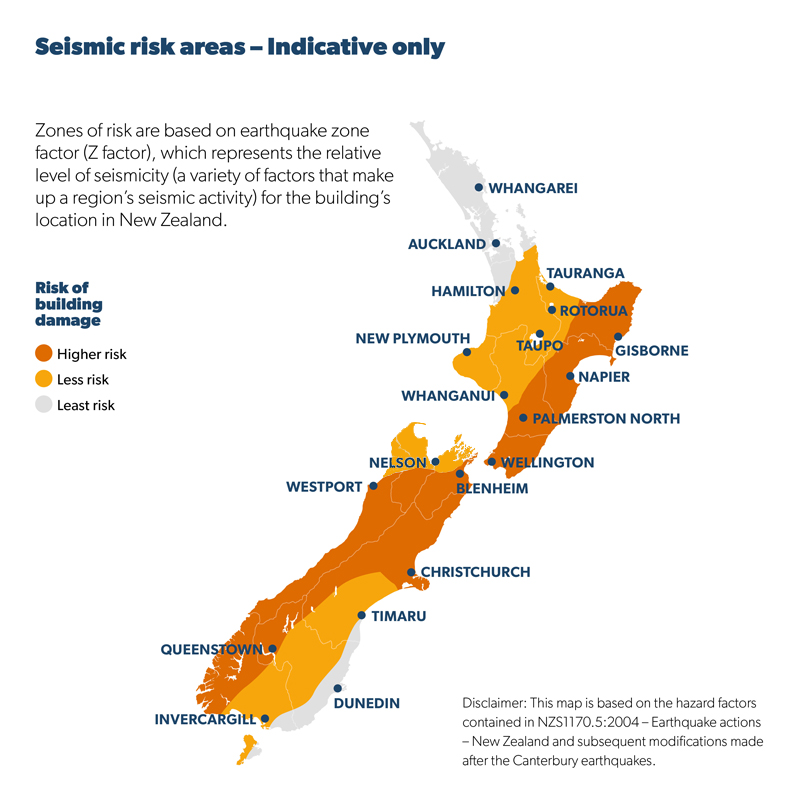These higher risk areas are above or close to where the Australian and Pacific tectonic plates meet, making earthquakes more common. See the map below.
You can read more about New Zealand’s plate boundary zone on the GNS website(external link)
Every earthquake is different and unpredictable. The way the land moves during an earthquake can affect how a building performs. Even small earthquakes can damage a home, depending on the land the building sits on, as well as the building’s design and construction.
There are steps you can take around your home to help reduce the risk of damage:
Ask your local council whether the land around your home is susceptible to:
- liquefaction (where liquid, sand and silt rise up from the ground)
- lateral spread (where liquefied land pulls apart or cracks)
- changes in level or landslips.
The Building Research Association of New Zealand (BRANZ) has more technical information about various earthquake hazards on its Seismic Resilience(external link) webpage.